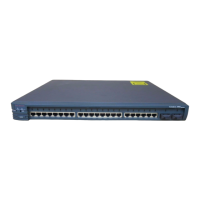Chapter 7: Spanning Tree Protocol (STP) 113
Section 7-1
STP Tiebreakers
When any STP decision has identical conditions or a tie, the final decision is based on
this sequence of conditions:
1. The lowest BID
2. The lowest root path cost
3. The lowest sender BID
4. The lowest port ID
Path Costs
By default, switch ports have the path costs defined in Table 7-1.
Table 7-1 Switch Port Path Costs
Port Speed Default Port Cost “Short
Mode”
Default Port Cost “Long
Mode”
4 mbps 250 —
10 mbps 100 2,000,000
16 mbps 62 —
45 mbps 39 —
100 mbps 19 200,000
155 mbps 14 —
622 mbps 6 —
1 gbps 4 20,000
10 gbps 2 2000
100 gbps — 200
1000 gbps (1 tbps) — 20
10 tbps — 2
By default, Catalyst switches in RPVST+ mode use the “short mode” or 16-bit path or
port cost values. When the port speeds in a network are less than 1 gbps, the short mode
scale is sufficient. If you have any ports that are 10 gbps or greater, however, set all
switches in the network to use the “long mode” or 32-bit path cost scale. This ensures
that root path cost calculations are consistent on all switches.
